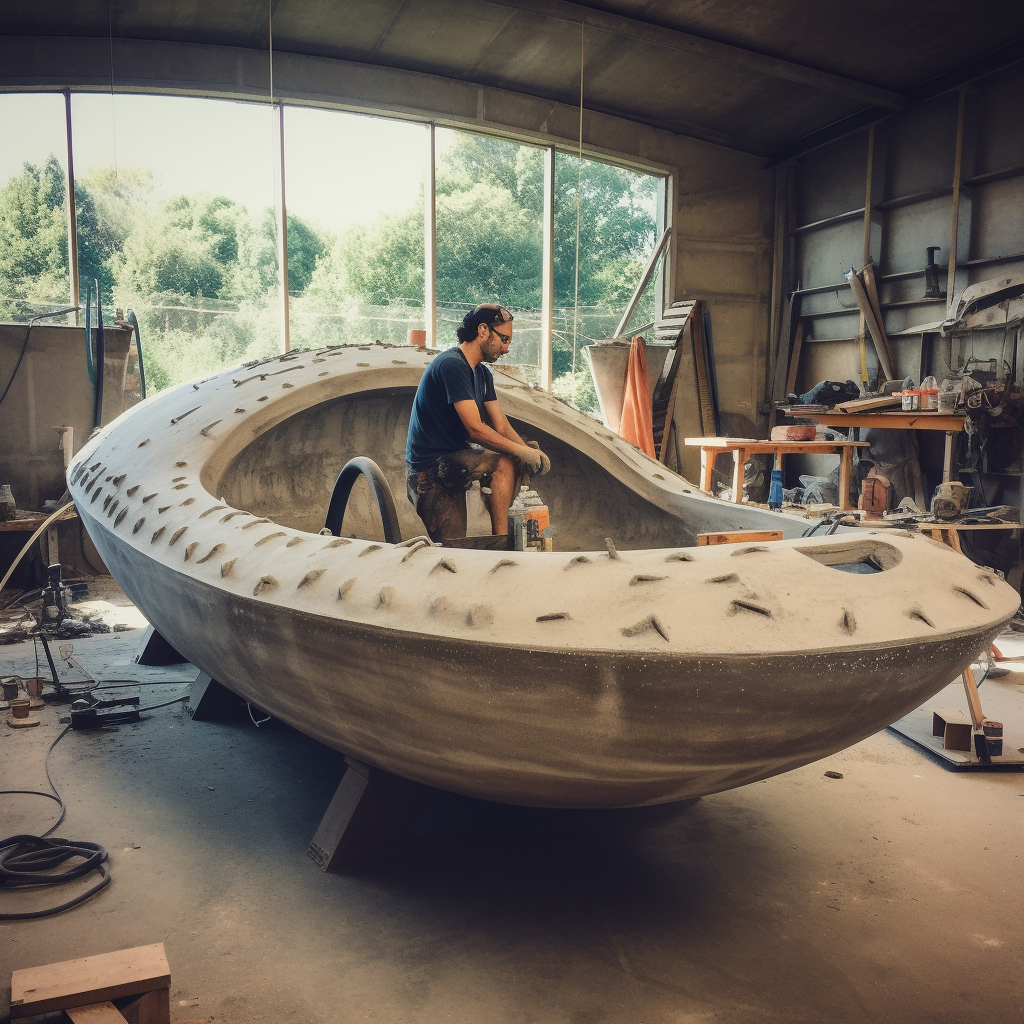Can a boat be built from concrete? Is the question odd? Does it become even more peculiar when the answer is ‘yes’? Moreover, this oddity has been experienced for over a century. So, how is this possible? The perspective changes entirely when ferrocement comes into play. In this article, we will explore how an ordinary material transforms into an extraordinary form and finds diverse applications through the manufacturing technique.
The construction of ferrocement literally involves creating a mesh system that forms the surface of the iron structural element, while the cement fills the gaps in this mesh, resulting in a thin-textured concrete material.
When used in boats, this unique material, born from the combination of iron and cement, brings forth an aesthetic and experiential dimension beyond traditional materials. Ferrocement stands out with its durability, lightness, and flexible design advantages.
How Is It Made?
The construction of a ferrocement boat or structure begins with creating a skeleton using steel bars. Subsequently, a thin layer of concrete is obtained by filling the gaps in the skeleton with cement. In the final step, the surface is shaped using plaster or spray methods. The durability and lightness of ferrocement enable the boat to remain balanced on the water’s surface, proving that, contrary to common belief, concrete does not sink in water.

History
Ferrocement began its journey in ancient times with a mixture of burnt lime and water. Initially, the use of cement was limited to correcting irregularities in walls and serving as mortar between building blocks. However, the Chinese had been building boats by combining cement with bamboo reinforcement for a very long time. In the 1840s, Frenchman Joseph Louis Lambot began incorporating metal reinforcement into cement. Italian Professor Pier Luigi Nervi experimented with cement reinforcement, combining layers of wire mesh and thin steel bars. The use of ferrocement as a material for boat construction was proven when Nervi’s company built the 165-ton motor sailboat Irene in 1945.
Floating Concrete
Ferrocement is used in boat construction due to its waterproof feature, especially becoming popular during World War I when steel materials were limited. The first concrete boats used by the U.S. Navy in the 1900s were made with ferrocement.
Organic Forms
The architectural flexibility of ferrocement is evident in boat design. The material contributes to the emergence of aesthetic details and unique designs by favoring round lines, organic forms, and curved solutions. In addition to its aesthetics, its environmental friendliness signals that it can be a material applauded in the industry. Its low carbon footprint demonstrates that ferrocement is an environmentally friendly material from a sustainability perspective. Considering its economic aspects, the material’s simple structure and uncomplicated production technique reduce construction costs.
Pushing the Limits
Ferrocement can make a difference in architecture, especially by creating organic and unique forms, opening the doors to sustainable construction. This material has been used in various fields from the past to the present and seems likely to appear in many more projects in the future.
Representing an important example of pushing the limits of concrete and creativity, ferrocement showcases an unknown aspect of concrete, taking us on a journey that defies the laws of physics, floating in the blue waters. While sharing the experience of this journey with you, we are turning the boat in a different direction to meet you in the next article. We invite you to our new course in advance.
Fair winds!






